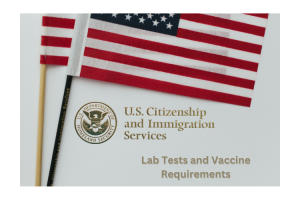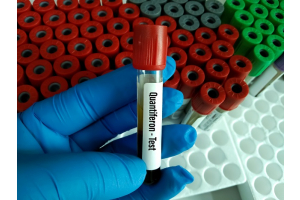TB Test

Several tests can be used to diagnose tuberculosis (TB), including:
-
Tuberculin Skin Test (TST): also known as the Mantoux test, it is a test that involves injecting a small amount of a protein called purified protein derivative (PPD) under the skin of the arm. If a person has been exposed to TB, their immune system will react to the PPD, causing a raised, challenging area to form at the injection site. The size of the raised area is measured 48-72 hours after the injection, and if it's above a certain size, it's considered a positive result.
-
Interferon-Gamma Release Assays (IGRAs): These are blood tests that measure the release of a specific protein called interferon-gamma when a person's blood cells are exposed to TB antigens. IGRAs are more specific than the TST, and are less likely to give false-positive results in people vaccinated with the Bacillus Calmette-Guérin (BCG) vaccine or exposed to non-tuberculous mycobacteria.
The QuantiFERON-TB Gold Plus (QFT-Plus) test is a type of interferon-gamma release assay (IGRA) that is used to diagnose tuberculosis (TB) infection. It is considered one of the most accurate tests for TB because it measures the body's specific immune response to TB antigens rather than just the presence of TB bacteria.
The test measures interferon-gamma release, a protein produced by the immune system in response to TB antigens. A small amount of blood is collected from the patient and then exposed to TB antigens in a lab. If the patient has been infected with TB, their immune system will produce interferon-gamma in response to the antigens, which will be detected in the blood sample.
The QFT-Plus test is considered more specific and accurate than the traditional tuberculin skin test (TST), also known as the Mantoux test, as it is less likely to give false-positive results in people who have been vaccinated with the Bacillus Calmette-Guérin (BCG) vaccine or who have been exposed to non-tuberculous mycobacteria. The QFT-Plus test is also more convenient for patients, as it does not require a return visit for reading, unlike the TST.
-
Chest X-ray: A chest x-ray can help identify signs of TB in the lungs, such as cavities or areas of increased density.
-
Sputum Smear Microscopy: A sample of sputum (mucus coughed up from the lungs) is examined under a microscope to look for acid-fast bacilli (AFB), the bacteria that cause TB.
-
Culture: This test is done to grow and identify the Mycobacterium tuberculosis in a lab; it's usually done after a positive microscopy test to confirm the bacteria's presence and identify the specific strains.
-
Polymerase Chain Reaction (PCR): This test looks for the genetic material of the TB bacteria in a sample of sputum or other bodily fluids; it's a rapid test and can detect small amounts of the bacteria.
It's important to note that the choice of test depends on the patient’s symptoms, risk factors, and test availability. A healthcare professional can help determine the appropriate test or combination of tests based on the individual case.
-
Essential Information and Insights: IGRA Test Uncovered
Are you curious about the Igra Test? If so, you're in the right place. In this blog, we'll uncover a -
Immigration Medical Exam, Vaccinations and Lab Tests, Explained
Immigration medical tests are an essential aspect of the immigration process, ensuring that individu -
Best TB Test- Quantiferon Gold- An IGRA Test
Categories: TB TestQuantiferon Gold is a revolutionary TB test that has become the most recommended and accurate method -
Affordable Quantiferon TB Test With No Doctor Visit
What is Tuberculosis? Tuberculosis (TB) is a highly contagious respiratory infection that, if left



